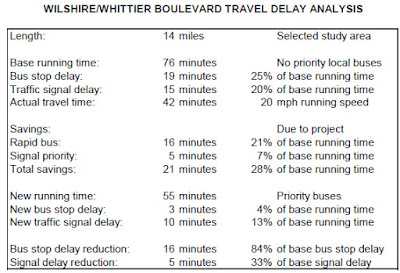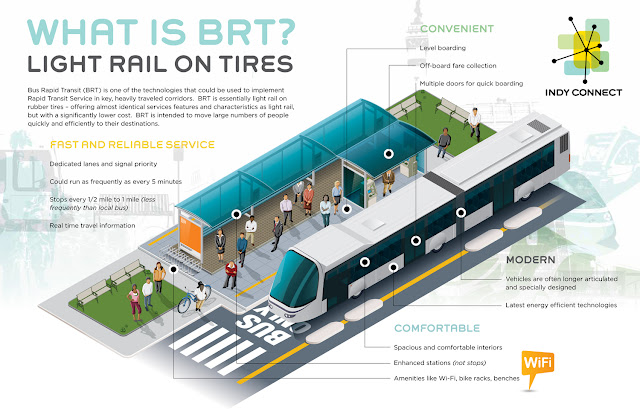What Bus Rapid Transit Is and What It Isn't
It isn't too often that mayors of North American cities travel to South America to admire urban planning models. There is one notable exception, and that is Curitiba, Brazil, where forty years ago a new vision for urban mobility was created, revamping the private bus chaos that dominates many South American big cities.
I like the Curitiba example especially, for it was invented by an architect who, once he was elected mayor, immediately began to think outside the box.
He watched the clogged major arteries leading in and out of his rapidly growing mega city, the foul air and the many carless urban poor that couldn't get anywhere, and decided that something needed to be done that was fast, relatively cheap and system-wide. Unlike the one shiny subway line that Chile's Santiago boasts, he gave his Curitiba a whole system of fast buses that operate like trains all across town.
More or less overnight. Nobody had seen such drastic repossession of streets before. Even the buses were unheard of with their double articulation (two accordion elements) and some extra doors. Jamie Lerner and his creative transit planners left nothing untouched that could make the good old bus more efficient: of course the buses had their own lanes and signals (many other cities had that already in place, at least sporadically).
But nobody had before tried bus boarding from elevated platforms, or selling bus tickets in advance of boarding, restricting entrance to the waiting areas to those with tickets like a subway station, elegantly eliminating bus stop loitering. (At the time low floor buses didn't exist yet and lots of time was wasted with people stepping up and down the three steep steps or deploying ramps for handicap access).
 |
| Curitiba BRT bus station with boarding tubes and custom double articulated buses |
Thus in Curitiba, Bus Rapid Transit (BRT) was born, and North American transit planners took notice, mostly, though, for the wrong reasons, namely the lower cost compared to rail.
BRT is Bus Rapid Transit – a high quality, high capacity rapid transit system that, in many ways, improves upon traditional rail transit systems. Vehicles travel in exclusive lanes, avoiding traffic. Passengers walk to comfortable stations, pay their fares in the station, and board through multiple doors like a train. Service is frequent and fast. Vehicles can be powered by hybrid electric or clean diesel (source)
 |
| Key attributes of BRT. In yellow what LA applied for their Rapid Bus system |
One could argue that one could redefine the term, after all, it didn't come with a copyright. What is the point of being picky about a transit definition? Once we go back to the original problem we will see that the metrics that make BRT real are not a trifling matter but have everything to do with the original issue: how can one transport the masses across a large metro area without going bust?
The U.S. has seven authentic BRT lines in Cleveland, Las Vegas, Los Angeles, Eugene Ore., and several in Pittsburgh. None achieve the internationally recognized "gold standard" of BRT like Bogota's TransMilenio line. But one planned for Chicago's Ashland Avenue might. (Forbes)
Seen this way it becomes immediately clear that most of what gets billed as BRT in the US doesn't cut it: a single BRT line doesn't, nor does a system where standard 40' buses can barely transport more than 50 people at a time, nor a system where buses get stuck in traffic or where buses linger at stops until a long line of cash payers has entered through a single door of a bus.
| Real BRT busway in Los Angeles (no other vehicles allowed on busway). Photo: ArchPlan Inc. |
The reasons why so many attributes are often left off are obvious: the lower cost of construction of BRT comes with a high price in terms of surface impacts. To make the bus system complete and efficient, the impacts on the existing streets and the existing traffic are heavy, and in many older cities just not practical because there simply isn't enough space.
| Boston Silver Line tunnel station (Photo: ArchPlan) |
The Baltimore Quickbus (QB) may be an example of bus service that is a copy of a copy of BRT. Our QB doesn't even meets the criteria set forth for the LA Rapid, which itself is a slimmed down version of the Curitiba system.
 |
| Special sign pylons were designed by Archplan with 212 Associates NY for the Baltimore Quickbus service but were only installed as prototypes for lack of maintenance funds |
There is much debate if BRT can attract economic development in the same way that rail investments have shown to add value.
 |
| Performance Improvements on two Rapid Lines (not full BRT) in LA |
 |
| Indy connect vision of BRT |
Related posts
- How the Built Environment Influences Who Rides Bus Rapid Transit
- BRT Urbanism
- Latin America's Bus Rapid Transit Boom Offers Lessons
- Bus Rapid Transit and Latin America
- BRT Systems in India
- Bus Rapid Transit Wins Battle with Cars in Indore
- The First Bus Rapid Transit System in a Former Soviet State
- Bus Rapid Transit and Sustainable Transport Changes
- Bristol's Bus Rapid Transit (BRT) System
